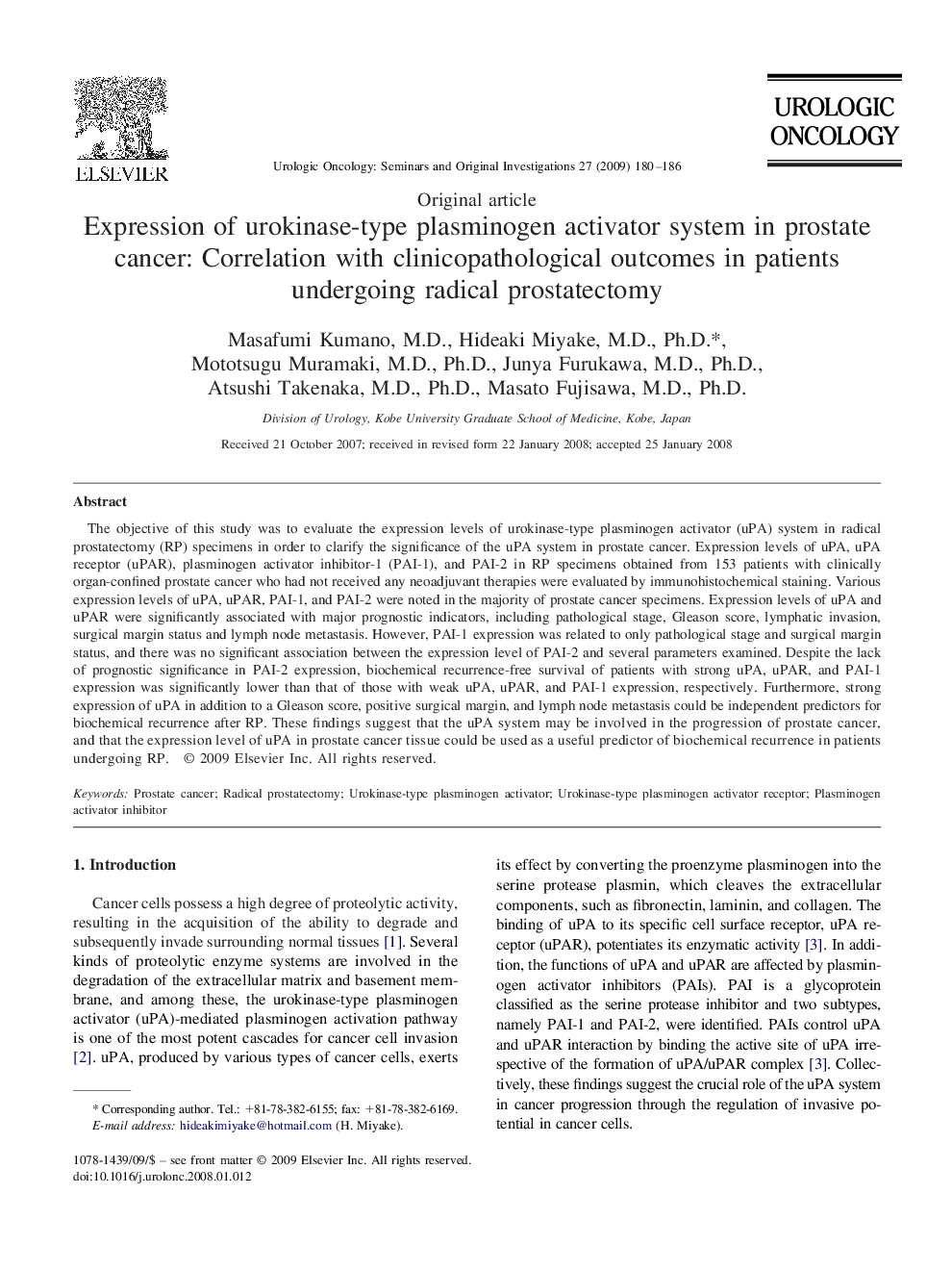| Article ID | Journal | Published Year | Pages | File Type |
|---|---|---|---|---|
| 4000900 | Urologic Oncology: Seminars and Original Investigations | 2009 | 7 Pages |
The objective of this study was to evaluate the expression levels of urokinase-type plasminogen activator (uPA) system in radical prostatectomy (RP) specimens in order to clarify the significance of the uPA system in prostate cancer. Expression levels of uPA, uPA receptor (uPAR), plasminogen activator inhibitor-1 (PAI-1), and PAI-2 in RP specimens obtained from 153 patients with clinically organ-confined prostate cancer who had not received any neoadjuvant therapies were evaluated by immunohistochemical staining. Various expression levels of uPA, uPAR, PAI-1, and PAI-2 were noted in the majority of prostate cancer specimens. Expression levels of uPA and uPAR were significantly associated with major prognostic indicators, including pathological stage, Gleason score, lymphatic invasion, surgical margin status and lymph node metastasis. However, PAI-1 expression was related to only pathological stage and surgical margin status, and there was no significant association between the expression level of PAI-2 and several parameters examined. Despite the lack of prognostic significance in PAI-2 expression, biochemical recurrence-free survival of patients with strong uPA, uPAR, and PAI-1 expression was significantly lower than that of those with weak uPA, uPAR, and PAI-1 expression, respectively. Furthermore, strong expression of uPA in addition to a Gleason score, positive surgical margin, and lymph node metastasis could be independent predictors for biochemical recurrence after RP. These findings suggest that the uPA system may be involved in the progression of prostate cancer, and that the expression level of uPA in prostate cancer tissue could be used as a useful predictor of biochemical recurrence in patients undergoing RP.
